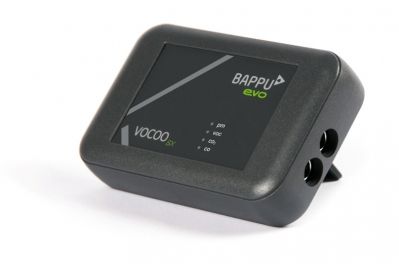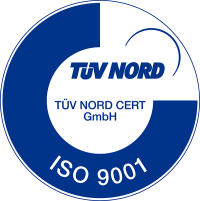News
Particulate matter sensor from manufacturer

It is that time again: On this years A+A in the time from 17th to 20th October 2017 we present our new particulate matter sensor for the first time to the professional audience.
The A+A in October 2017 will once again be the largest international trade forum for safety, security and health at work and for the first time we present our new particulate matter sensor for our multi-measuring device BAPPU-evo.
Particulate matter - this concept is currently emerging in many news. In fact, the fine particles present a high health risk: „The smaller the dust particles, the greater the risk of becoming ill. Small particles penetrate deeper into the respiratory tract than larger ones. This leads to areas from where they are not excreted when exhaled.“, (source: Federal Environment Office 2017/Germany)
What is particulate matter?
Dust is always present – however, only a small part of it is visible to the naked eye, the rest is particulate matter which is almost invisible. Particulate matter consists of a complex mixture of solid and liquid particles and is divided into different fractions depending on the size of the particles.
It is especially the very fine particles that are increasingly becoming the centre of attention: small particles penetrate deeper into the airways than larger ones and thereby reach into areas from where they cannot be expelled through exhalation.
We inhale about 20,000 times a day – and we not only inhale oxygen, but also particulate matter. There is increasing evidence to suggest that there is a significant risk to our health due to excessive exposure to particulate matter.
How can the level of particulate matter be assessed for work safety?
In general, workplaces in Germany are governed by the regulations stipulated by the German Workplace Ordinance (ArbStättV) and the German Technical Rules for Workplaces (ASR), which describe the practical implementation of the requirements. In terms of air quality, ASR 3.6 states the following: „In enclosed workplaces, healthy air must be available in sufficient quantities, as a rule, this should correspond to the quality of the outside air.“
It is therefore necessary to abide by the guidelines for outdoor air, which are essentially based on EU Directive 2008/50/ EC. The threshold values for the different particle fractions are set here.
New Particulate matter for BAPPU-evo
In order to achieve an objective assessment of the well-being at the workplace, the measurement of the air quality is becoming more and more important.
Therefore, in addition to the existing measurements pertaining to VOC, CO 2 and CO, the assessment of the air quality has been enhanced. In order to be able to carry out these measurements in a more comprehensive manner, ELK is expanding its sensor technology by means of particulate matter measurement.
Features
- Compatible with BAPPU-evo
- Comprehensive assessment of indoor air quality
- Measuring ranges: PM1, PM2.5, PM10
- Visualization of the distribution of the particle concentration
Conclusion
No matter how the discussion on particulate matter threshold values is assessed - less is better, in particular due to the fact that - without applying more complicated procedures - the quantity and size of the particles do not tell us anything about their toxicity.
With its new particulate matter sensor, BAPPU-evo is ideally suited to assess the quality of the room air and to improve it in the scope of the orientated measurement, especially in connection with the further climatic data that can be gathered with the BAPPU.
Our particulate matter sensor is available from March 2018.




